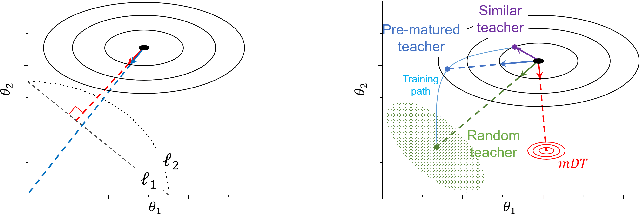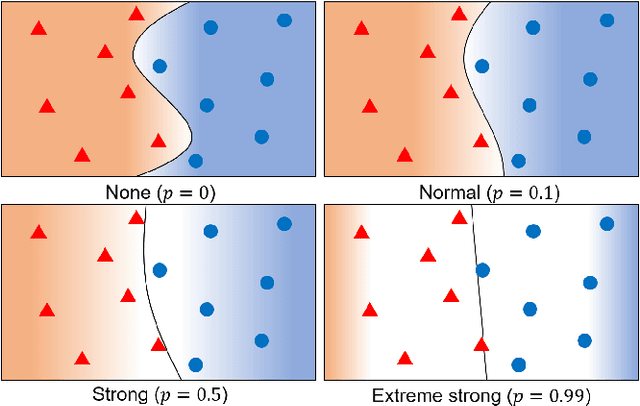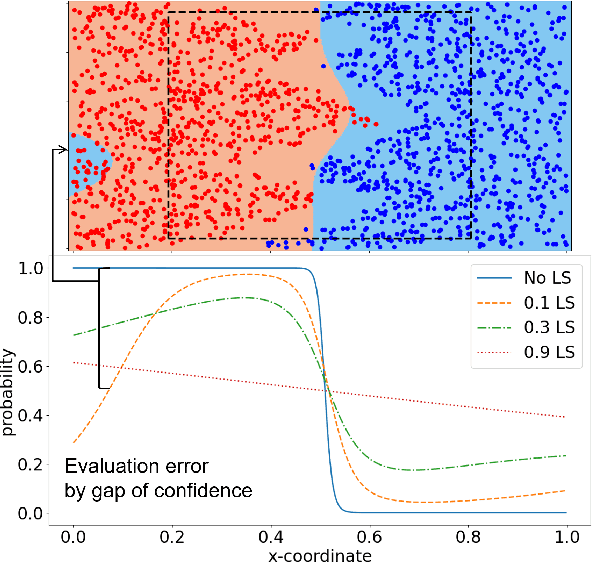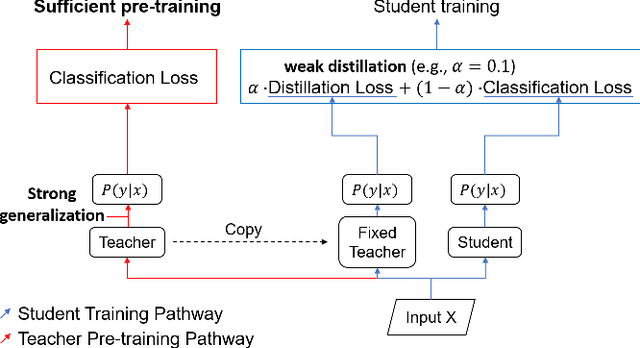Jong-Hun Shin
Learning from Matured Dumb Teacher for Fine Generalization
Aug 17, 2021



Abstract:The flexibility of decision boundaries in neural networks that are unguided by training data is a well-known problem typically resolved with generalization methods. A surprising result from recent knowledge distillation (KD) literature is that random, untrained, and equally structured teacher networks can also vastly improve generalization performance. It raises the possibility of existence of undiscovered assumptions useful for generalization on an uncertain region. In this paper, we shed light on the assumptions by analyzing decision boundaries and confidence distributions of both simple and KD-based generalization methods. Assuming that a decision boundary exists to represent the most general tendency of distinction on an input sample space (i.e., the simplest hypothesis), we show the various limitations of methods when using the hypothesis. To resolve these limitations, we propose matured dumb teacher based KD, conservatively transferring the hypothesis for generalization of the student without massive destruction of trained information. In practical experiments on feed-forward and convolution neural networks for image classification tasks on MNIST, CIFAR-10, and CIFAR-100 datasets, the proposed method shows stable improvement to the best test performance in the grid search of hyperparameters. The analysis and results imply that the proposed method can provide finer generalization than existing methods.
Improving a Multi-Source Neural Machine Translation Model with Corpus Extension for Low-Resource Languages
Feb 14, 2018



Abstract:In machine translation, we often try to collect resources to improve performance. However, most of the language pairs, such as Korean-Arabic and Korean-Vietnamese, do not have enough resources to train machine translation systems. In this paper, we propose the use of synthetic methods for extending a low-resource corpus and apply it to a multi-source neural machine translation model. We showed the improvement of machine translation performance through corpus extension using the synthetic method. We specifically focused on how to create source sentences that can make better target sentences, including the use of synthetic methods. We found that the corpus extension could also improve the performance of multi-source neural machine translation. We showed the corpus extension and multi-source model to be efficient methods for a low-resource language pair. Furthermore, when both methods were used together, we found better machine translation performance.
 Add to Chrome
Add to Chrome Add to Firefox
Add to Firefox Add to Edge
Add to Edge